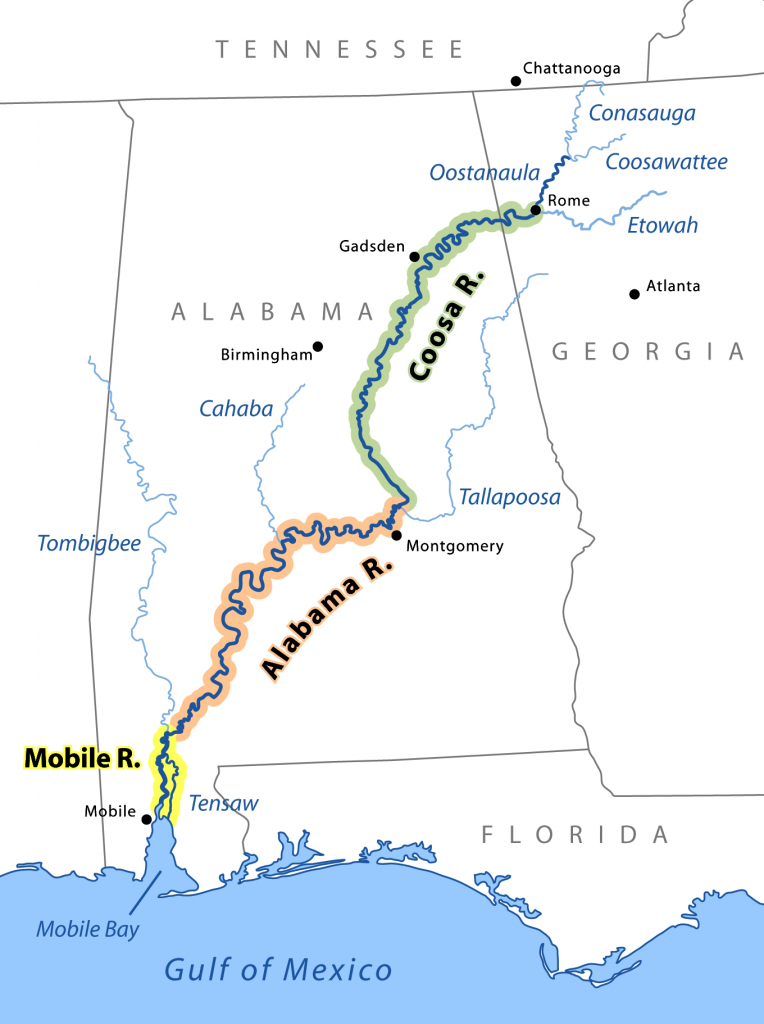Technically speaking, we as a species have explored more of the cosmos than of the extensive oceans that make up the majority of our planet. Earth’s history is riddled with sightings and encounters of subaqueous creatures both large and small, beautiful and dangerous, and real and imaginary. Whole skeletons have been discovered to prove the existence of immense antediluvian monsters the globe over. While these creatures are in fact proven to have roamed the earth’s waters at some prehistoric juncture, many more fantastical types have managed to bleed over into a myriad of weird and wonderful superstitions. The Curse of The River serpent is no exception.
Urban legends are positively rampant in the United States, largely in sparse areas of vast deserts, rivers, and woodland where superstition is given true space to run wild. One long-persevering tale, originating from the rivers of Tennessee and Alabama, sounds more like something from HP Lovecraft’s most aqueous nightmare than a backwater fantasy. This is the curse of the river serpent.
The Coosa River

The Coosa River, once claimed by the French and considered the “key to the country”, is one of the main areas this particular thalassic oddity has been sighted. A 280 mile tributary of the Alabama River, Coosa River has been a place of rich history since long before the first Europeans visited it in 1540. Coosa Basin contains 147 fish species, oddities such as the painted rocksnail, and plenty of alligator sightings, but it was around 1822 when a great snakelike creature with large fins was first spotted slithering near the banks at Ball Play Creek.
The Curse of The River Serpent Legend
Columnist E. Randall Floyd described several incidents in a 1993 article in the Spartanburg Herald-Journal. According to the article, Buck Sutton was fishing in Van’s Hole when he saw the creature writhing in the swampy shallows. He described the horrible sighting to his friends, only to turn up mysteriously dead a few days later. Since this mysterious occurrence other victims have fallen prey to the serpent’s curse, such as Billy Burns dying in 1827 and Jim Windom in 1829. No records exist as to the actual cause of these perplexing departures, though the stories are evidence enough for many to avoid the basin at all costs.
So is it just backwoods imagination gone wild, or is there something to be said for the curse of the Alabama river serpent? While most tales of sea creatures have been dismissed as sightings of extremely large river fish, fossils discovered in 1834 show a prehistoric whale once swam in waters that existed long ago where Alabama is now. According to the Alabama Department of Archives and History, the creature was later found by scientists to be Basilosaurus cetoides, or zeuglodon, a prehistoric meat-eating whale found once in the Eocene epoch that grew as long as 70 feet (the head itself able to grow as long as five feet).
Conclusion
Humans are not meant to be underwater, and it is this fact that drives our inescapable thalassic fears. Films like Underwater (2020) and Leviathan (1989) exploit this to great effect, and the possible existence of seventy-foot sea serpents doesn’t help matters much. From the early to mid-1800s, sea serpent sightings occurred with the regularity of UFO sightings today, according to the Geological Survey of Alabama, and it is within the public’s fascination with the uninhabitable that the truth will grow ever closer.
References
Underwater (2020) – IMDb
Leviathan (1989) – IMDb
Car-sized catfish? Supernatural serpents? ‘Monster Fish’ host Zeb Hogan discusses Alabama’s legendary river creatures (Odd Travels w/video, photos) – al.com
Herald-Journal – Google News Archive Search
Joe first knew he wanted to write in year six after plaguing his teacher’s dreams with a harrowing story of World War prisoners and an insidious ‘book of the dead’. Clearly infatuated with horror, and wearing his influences on his sleeve, he dabbled in some smaller pieces before starting work on his condensed sci-fi epic, System Reset in 2013.Once this was published he began work on many smaller horror stories and poems in bid to harness and connect with his own fears and passions and build on his craft.
Joe is obsessed with atmosphere and aesthetic, big concepts and even bigger senses of scale, feeding on cosmic horror of the deep sea and vastness of space and the emotions these can invoke. His main fixes within the dark arts include horror films, extreme metal music and the bleakest of poetry and science fiction literature.
He holds a deep respect for plot, creative flow and the context of art, and hopes to forge deeper connections between them around filmmakers dabbling in the dark and macabre.

